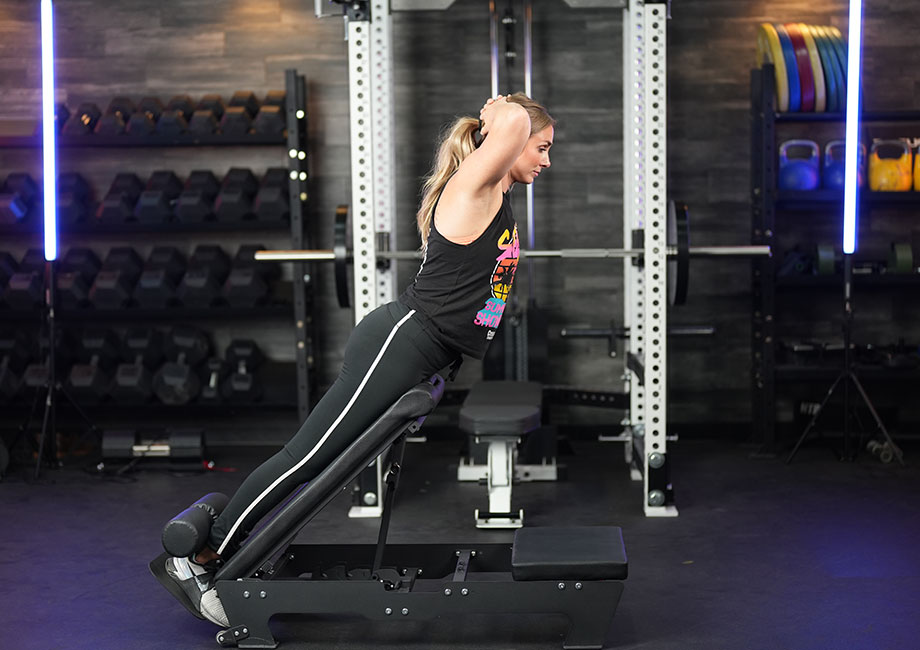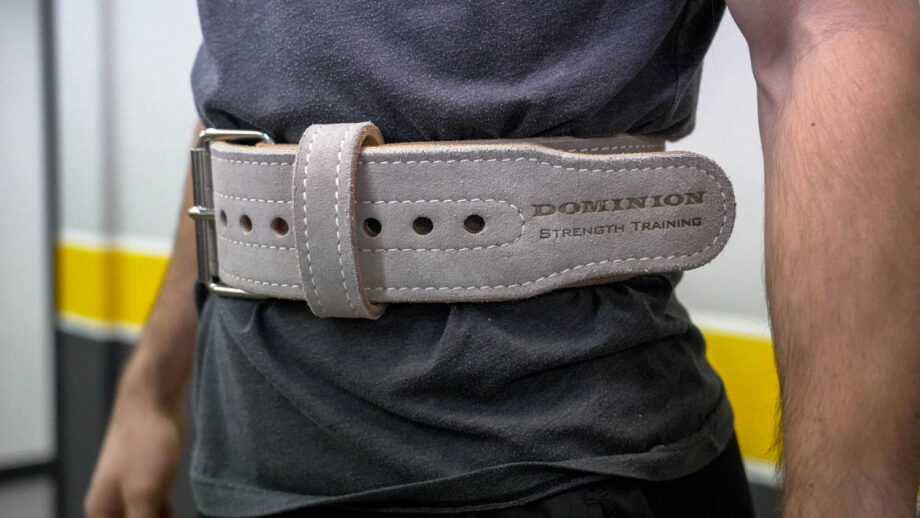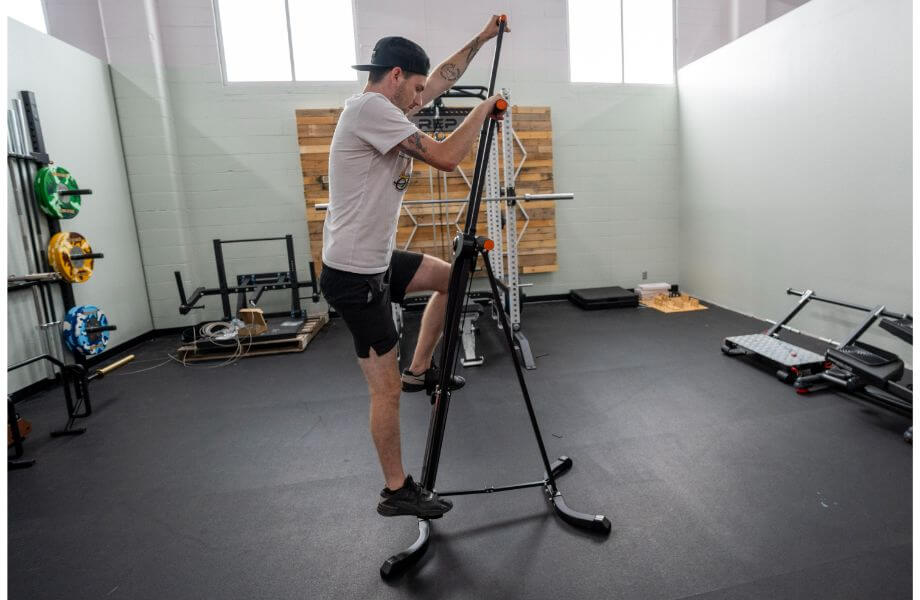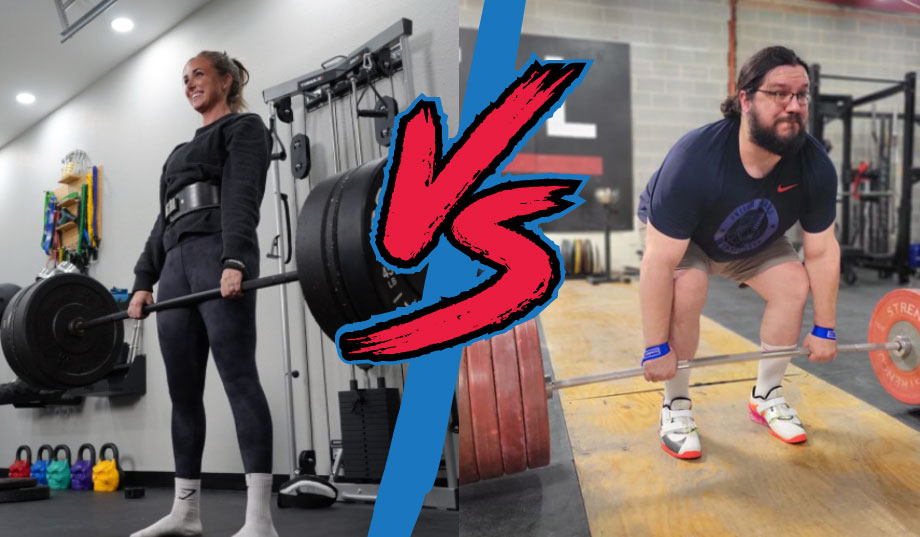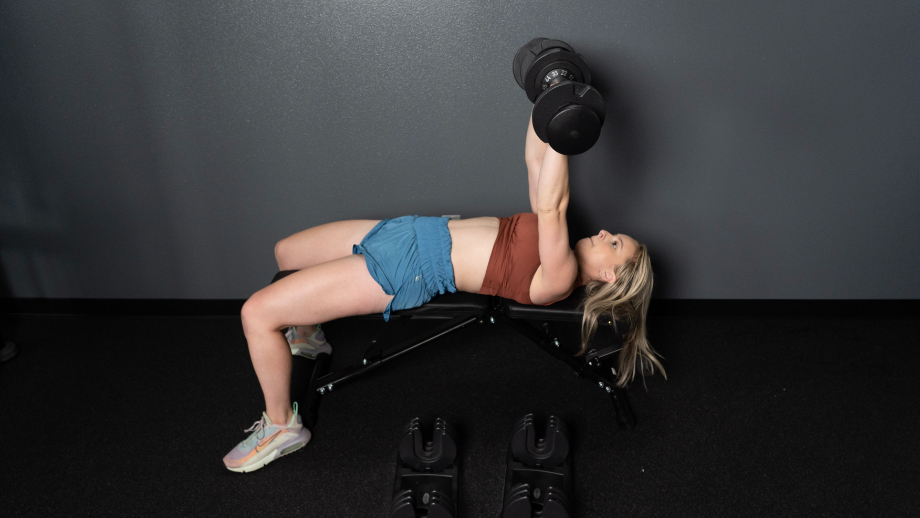The strength and length of the posterior muscles, like the lower back, glutes, and hamstrings, form the foundation of most lower-body movements. These muscle groups work together so you can run, jump, hinge, and squat like a champ. It’s easy to overlook the hyperextension exercise to strengthen these posterior muscles for hypertrophy, strength, or performance.
RELATED: Lower-Body Workouts
There may be sexier and more popular bodyweight lower back exercises, but in my humble opinion, none are as effective as the hyperextension exercise. Your hamstrings, glutes, upper back, and lats get a lot of love, as they should, but don’t sleep on your lower back (not literally). The strength and health of the lower back allow these muscles to do their job.
As a certified personal trainer (CPT), I know the importance of taking care of your lower back for fitness longevity. Here, I’ll dive into the hyperextension exercise so you’ll know how to do it correctly and the benefits of adding this movement to your regular training schedule. Believe me; your back will thank you.
RELATED: Lower-Back Exercises
How to Do the Hyperextension Exercise
- Lie prone with your upper body on a hyperextension bench, your legs off the end, and your feet secured on the pads.
- With straight legs, activate your glutes and hamstrings to raise your legs behind you to a hyperextension position.
- You should feel an intense muscle contraction in your lower back, glutes, and hamstrings when hyper-extending.
- Pause for a second and then slowly lower down to the starting position.
- Reset and repeat for desired reps.
RELATED: Hamstring Exercises At Home
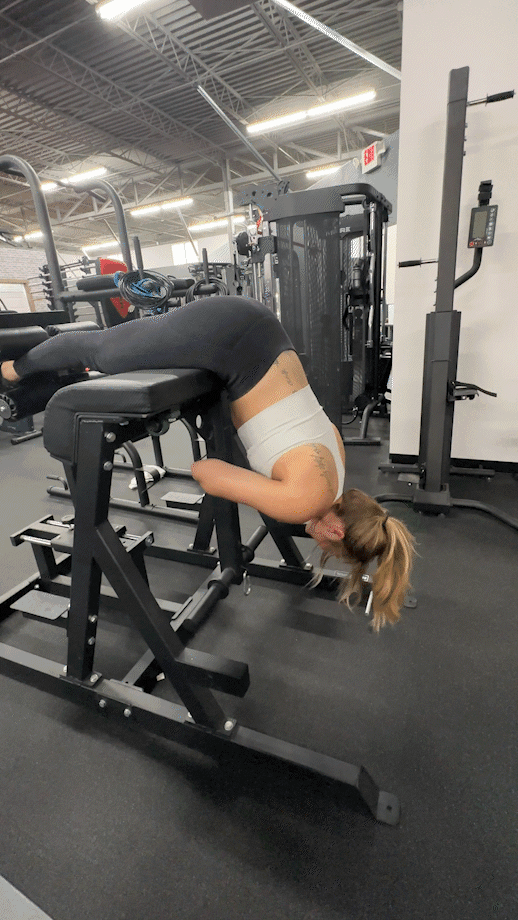
Personal Trainer Tips for Proper Form
The hyperextension exercise is not complex or technical like a barbell deadlift or good morning, but there are a few things to watch out for. Here are my CPT tips to get the most out of this exercise.
Pay Attention to Your Set-Up
Ensure your legs are straight, feet secured, and you have room to move throughout the entire range of motion. Engaging your anterior core assists in keeping your lumbar spine neutral when starting this exercise.
Watch Your Range of Motion
With the hyperextension exercise, there is a temptation to hyperextend the lower back to create more range of motion (ROM). If you feel this exercise more in your lower back than your gluteus maximus and hamstrings, it’s a sign that your lower back is a little too involved.
RELATED: Functional Core Exercises
Focus On Tension, Not Momentum
No one cares about your hyperextension max; save that for the bench press. The hyperextension is not a one-rep max (1RM) type of exercise. It’s better to slow it down and feel your posterior muscles working than using body English to muscle up the weight. It’s also better to focus on tension and not load.
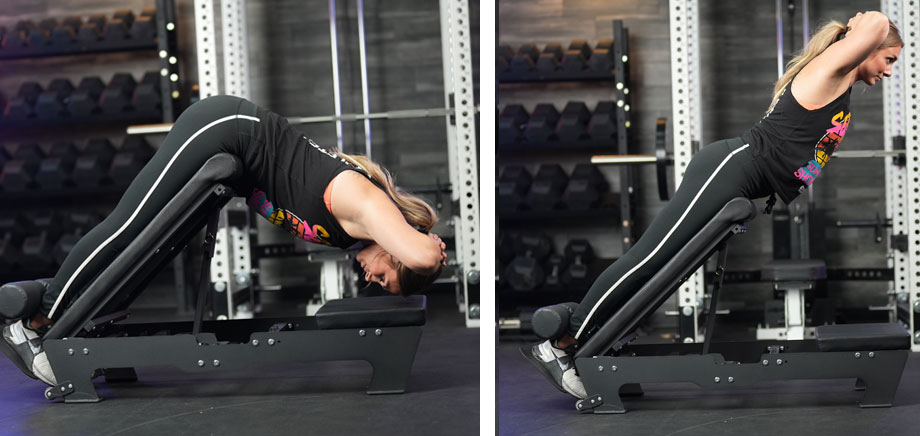
Hyperextension Benefits
When the hyperextension exercise is performed correctly, it can have the following vital benefits.
Improved Knee Health
Strengthening the glutes, hamstrings, and lower back improves glute posterior chain strength and hip mobility. Hip mobility helps with knee stability and knee pain1 because the knee will not pick up any shortfalls in hip mobility.
Improved Standing Posture
Stronger lower back muscles are needed to keep good posture and a neutral spine2 during heavily loaded exercises like barbell squats and deadlifts that compress the spine.
Glute Gains
Exercises with a larger range of motion (ROM), like the hyperextension exercise, pre-stretches the working muscles during the eccentric phase before the concentric phase3, giving you better hypertrophy potential.
RELATED: Resistance Band Exercises for Glutes
Lower Back Strength
The lower back muscle group (erector spinae) plays a vital role in keeping the spine neutral, like with squats and deadlifts. The lower back muscle group resists spinal flexion, which can happen when there is a load on the spine. When done with proper form, hyperextensions can help strengthen and protect your lower back4.
Hyperextension Variations
If you don’t have access to a hyperextension machine, don’t despair. Here are three variations you can do instead to get all the benefits of this fantastic exercise.
RELATED: How to Do Back Extensions At Home
Floor Extensions
Why do it: You will not have the same ROM as the standard hyperextension, but the floor hyperextension is easily accessible, and allows for increased stability.
How to do it:
- Lie face down on the floor with your legs and arms outstretched.
- Raise your extended arms and legs off the floor, feeling a contraction in your lower back, glutes, and hamstrings.
- Pause in this position and slowly lower to the floor.
- Reset and repeat for desired reps.
Note: Placing a dumbbell or weight plate between your feet will help increase the intensity.
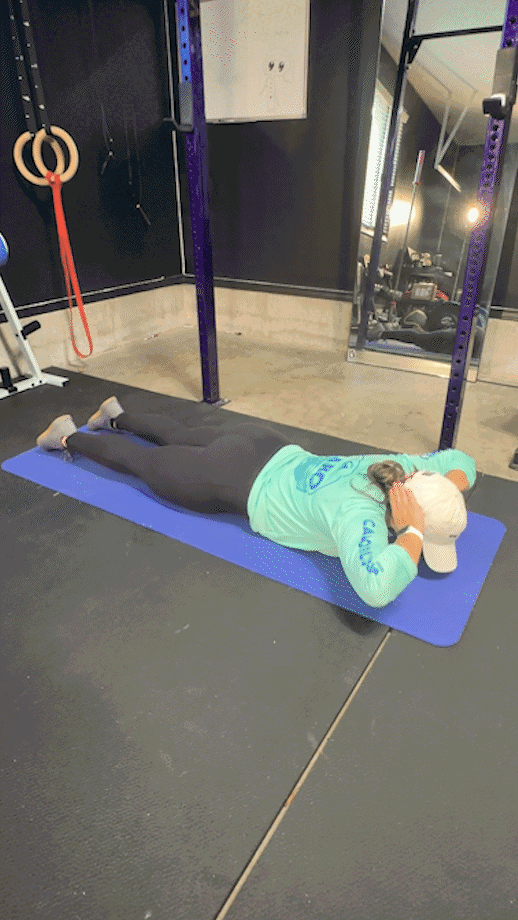
Bench Reverse Hyperextensions
Why do it: The bench reverse hyperextension is similar to the floor variation but without using your arms and with an increased ROM for juicy muscle-building gains.
How to do it:
- Lay face down on a flat weight bench with your toes touching the floor and legs extended out behind you.
- Hold on to the sides or wrap your arms around the bench.
- Engage your glutes and raise your legs towards the ceiling until you feel the tension in your lower back.
- Lower your toes to the floor, reset. and repeat.
Note: Placing a stability ball on your bench will increase the intensity of this variation.
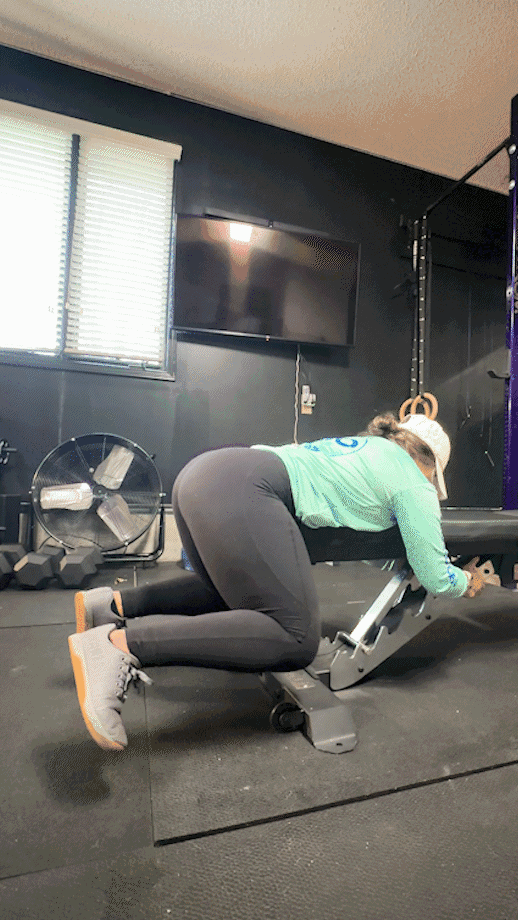
Plank Hip Extension
Why do it: With the plank hip extension, you’ll get the best of both worlds, improved core strength and a stronger lower back.
How to do it:
- Set up your elbow front plank position with your elbows underneath your shoulders and spine in a straight line from head to butt.
- Keeping your left leg straight, raise your right leg until you feel a contraction in your hamstrings, lower back, and glutes.
- Touch your foot to the ground, reset, and repeat on the other side.
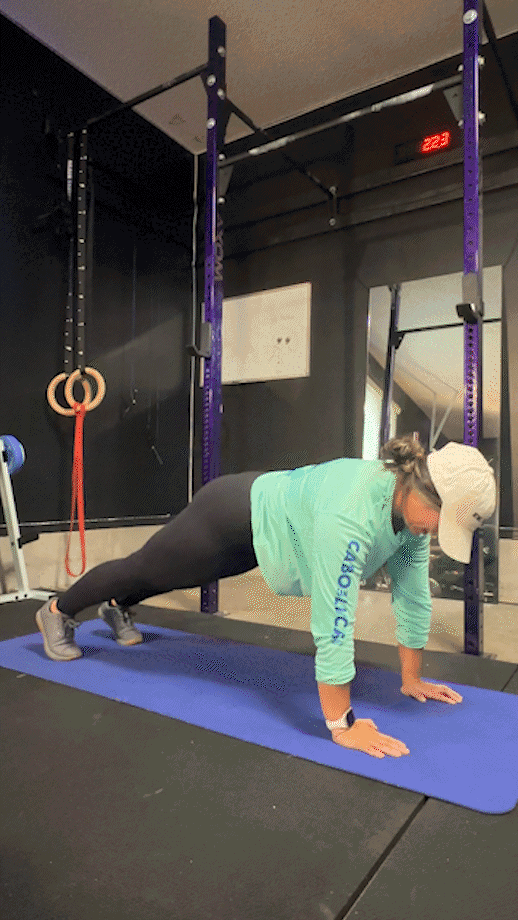
Hyperextension Exercise: FAQs
Is hyperextension a good exercise?
Hyperextension is an excellent exercise because a beginner to an advanced exerciser can do it. After all, it is easily progressed and regressed depending on your comfort level.
Is hyperextension the same as a back extension?
Hyperextension and back extension are somewhat synonymous, but hyperextension refers more to the movement (performing a joint extension beyond your typical range of motion); back extension commonly describes the exercise itself. Second, the hyperextension may push the range of motion further past neutral than the average back extension.
Are hyperextensions a core exercise?
When referring to the core, the average person often thinks of the six-pack muscles, but your core is every muscle between your chest and thighs. Going by this definition, hyperextensions are indeed a core exercise.
Can hyperextensions hurt your lower back?
Hyperextensions shouldn’t hurt your lower back when performed correctly; however, if you’re suffering from lower back pain, let pain be your guide with exercises like hyperextension that target the lower back. When performing hyperextension poorly, you may leave yourself open to a back injury.
RELATED: Foam Roller Exercises To Help Release Knots And Relieve Soreness
References
1. Ferber R, Bolgla L, Earl-Boehm JE, Emery C, Hamstra-Wright K. Strengthening of the hip and core versus knee muscles for the treatment of patellofemoral pain: a multicenter randomized controlled trial. J Athl Train. 2015 Apr;50(4):366-77. doi: 10.4085/1062-6050-49.3.70. Epub 2014 Nov 3. PMID: 25365133; PMCID: PMC4560005.
2. Michaud F, Pérez Soto M, Lugrís U, Cuadrado J. Lower Back Injury Prevention and Sensitization of Hip Hinge with Neutral Spine Using Wearable Sensors during Lifting Exercises. Sensors (Basel). 2021 Aug 14;21(16):5487. doi: 10.3390/s21165487. PMID: 34450929; PMCID: PMC8402067.
3. Vetter S, Schleichardt A, Köhler HP, Witt M. The Effects of Eccentric Strength Training on Flexibility and Strength in Healthy Samples and Laboratory Settings: A Systematic Review. Front Physiol. 2022 Apr 25;13:873370. doi: 10.3389/fphys.2022.873370. PMID: 35574461; PMCID: PMC9100951.
4. Studnicka K, Ampat G. Lumbar Stabilization. [Updated 2023 Aug 14]. In: StatPearls [Internet]. Treasure Island (FL): StatPearls Publishing; 2023 Jan-. Available from: https://www.ncbi.nlm.nih.gov/books/NBK562179/


